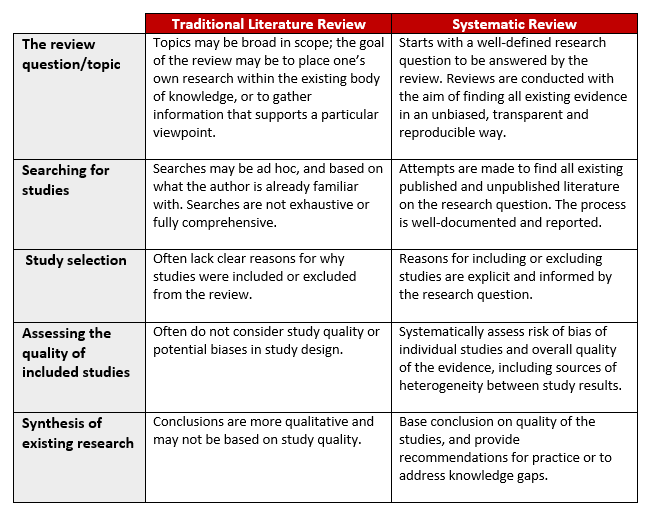
The Institute of Medicine recommends that a librarians or information specialist be involved in the systematic review process. In fact, a study shows that librarian involvement in systematic reviews improves both the quality and the reproducibility of the literature search (see Rethlefsen et al 2015).
Librarians at Carnegie Mellon University Libraries Evidence Synthesis Service can help you:
For more information about this service and to submit a help request, please fill out the form or contact a review consultant listed on the Evidence Synthesis Service page.
Evidence synthesis refers to a suite of methods that are used to find, synthesize and make sense of knowledge from existing research. Evidence synthesis usually involves systematic and transparent methods to search for studies and may involve an appraisal step to assess the quality of research on a topic.
Systematic reviews are the most well-established and well-known method of evidence synthesis. This is a methodical and comprehensive literature synthesis focused on a well-formulated research question. Its aim is to identify and synthesize all of the scholarly research on a particular topic, including both published and unpublished studies. Systematic reviews are conducted in an unbiased, reproducible way to provide evidence for practice and policy-making and identify gaps in research. They may involve a meta-analysis.
Systematic reviews are much more time-intensive than traditional literature reviews. They usually require a multi-person research team. Before embarking on a systematic review, it is important to determine whether the body of literature warrants one and to clearly identify your reasons for conducting a systematic review. For a list of other types of literature reviews, see this page.
How does a systematic review differ from a traditional literature review?

There are many other types of evidence synthesis methods beyond systematic reviews. For a good overview of evidence synthesis methods, see "A typology of reviews" by Grant and Booth (2009).
Here are a few of the more common methods used to synthesize the literature:
Evidence maps and systematic maps
Meta-analysis
Rapid Review
Scoping Review
Umbrella Review